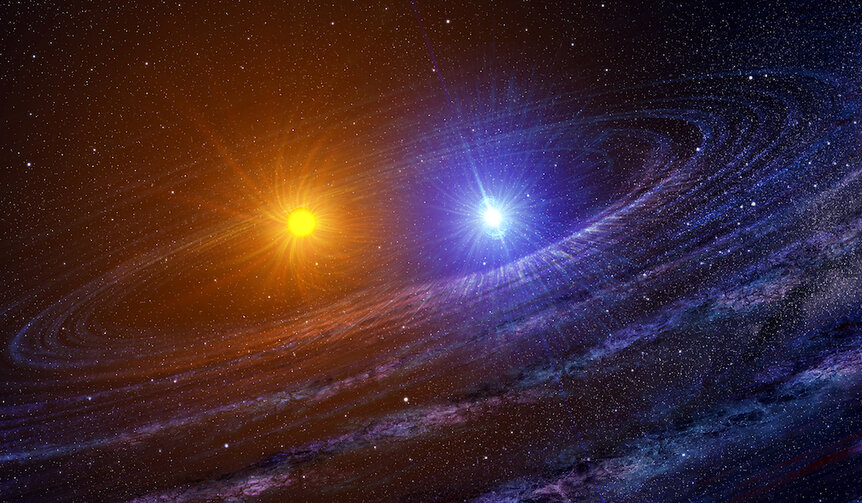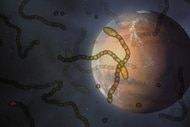Create a free profile to get unlimited access to exclusive videos, sweepstakes, and more!
Record-Breaking Runaway Stars Are Fleeing the Galaxy at Mach 6,000
Don't blink.
SYFY’s The Ark (streaming now on Peacock) opens on a crew of explorers slumbering soundly in their cryochambers, when disaster strikes. Woken a year before their arrival at Proxima Centauri, the crew must work together, and quickly, to stay alive. Even the closest stars are pretty far away and getting to another star system in anything close to a reasonable amount of time means spinning up considerable speed.
The distance to Proxima Centauri is roughly 4.2 light-years, 40 trillion kilometers, or 25.3 trillion miles away. To get there in six and a half years (2,400 days, give or take), they would need to travel something like 17 billion kilometers per day, which breaks down to roughly 200,000 kilometers per second. That’s pretty fast. So fast, in fact, that the Ark One could leave even the fastest stars in the dust. Still, stars are no slouches in the speed department, and astronomers recently discovered the fastest stars we’ve ever seen.
RELATED: Astronomers Find the First Rogue Black Hole Wandering the Milky Way!
Astronomers know that high-speed rogue stars exist, but it’s unclear how many of them are out there. So, scientists dug through archival Gaia data, looking at the proper motion of stars across the night sky and they found a handful of previously undiscovered runaway stars. Six new rogue stars were discovered, in total. Two of them are cruising around but still definitively bound to the galaxy. The other four are all moving fast enough to escape the gravitational pull of the Milky Way and set out for intergalactic space. And two of those are faster than any star we’ve seen before.
And the Star Speed Record Goes to…
The two fastest stars, known as J1235 and J0927, shatter the no-land-speed record for stars, clocking in at 1,694 kilometers (1,053 miles) per second and 2,285 kilometers (1,420 miles) per second, respectively. That’s more than 6,000 times the speed of sound. The discovery was posted to the ArXiv preprint database and submitted to the Open Journal of Astrophysics.
Astronomers believe these stars got into their current untethered predicament as a result of a violent supernova explosion. Sometime in the past, massive stars blew their tops and made it every other star in the area’s problem. When binary stars die, they sometimes do it more dramatically than others. If one of the pair is a white dwarf and it starts siphoning material from its companion (rude, honestly) it can become unstable and trigger the kind of explosion that would make Michael Bay temporarily lose consciousness from excitement.
When that happens, the donor star stops getting eaten alive and instead gets launched out of the system and, in some cases, out of the galaxy. It’s the ultimate cosmic expression of “if I can’t have you, no one can.” It’s a pretty toxic relationship all the way around. Analysis of the newly discovered rogue stars confirms characteristics consistent with a supernova boost. While only 14 of these supernova-boosted stars have been discovered so far, they’re giving astronomers a clearer view into how these sorts of things happen and how many rogue stars we might expect to find roaming interstellar back alleys.
Catch The Ark, and their ship so fast not even a star can catch them, streaming now on Peacock!



































